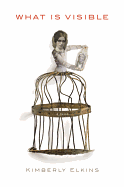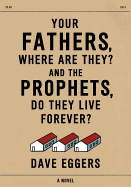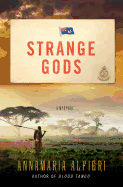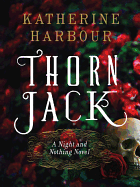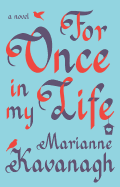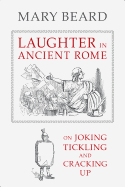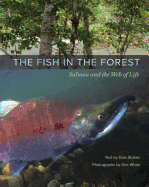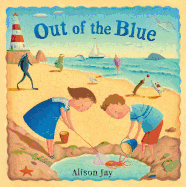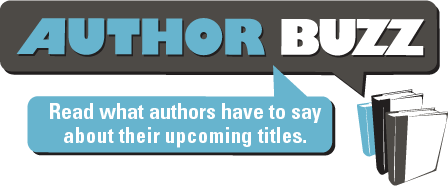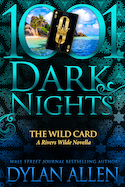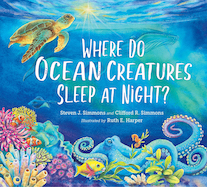 On an otherwise picture-perfect morning in the Bahamas, a whale strands on the beach near marine biologist Ken Balcomb's research station--one of many that washed ashore that day, casualties of a clandestine U.S. Navy submarine detection system that floods ocean basins with high-intensity sound.
On an otherwise picture-perfect morning in the Bahamas, a whale strands on the beach near marine biologist Ken Balcomb's research station--one of many that washed ashore that day, casualties of a clandestine U.S. Navy submarine detection system that floods ocean basins with high-intensity sound.
In War of the Whales: A True Story (Simon & Schuster, July 1, 2014), Joshua Horwitz offers the gripping account of a decade-long battle pitting activists committed to safeguarding the ocean environment against Navy admirals sworn to uphold national defense. At the heart of the story are attorney Joel Reynolds, who launches a David-and-Goliath legal fight to expose and challenge the Navy program, and Balcomb, who is ultimately forced to choose between his conscience and the oath of secrecy he swore to the Navy.
Equal parts legal drama, natural history and military intrigue, War of the Whales takes readers from the ocean depths to the nation's highest court. This thought-provoking, vividly narrated tale has been called by Bob Woodward as "thrilling and heartbreaking... a landmark book of deep, original reporting which could alter forever how we view our role as stewards of the seas."
Horwitz is the coauthor of two previous nonfiction books, Wrestling with Angels (with Naomi Rosenblatt) and If I Get to Five (with Fred Epstein, M.D.), as well as a young adult novel and several children's books. He is the co-founder and publisher of Living Planet Books, Washington, D.C., which specializes in books by major figures in science, medicine and psychology. Horwitz co-founded AuthorsOnline, a website featuring the homepages of award-winning and bestselling authors.
How did the story you tell in War of the Whales first come to your attention? Did you immediately know you wanted to write a book about it?
What first captured my attention was a short newspaper article--headlined "Whales vs. Navy"-- about a lawsuit filed by an environmental lawyer against the U.S. Navy to protect whales from the lethal effects of Navy sonar.
As I researched the background of the case, the personalities of the characters involved and the Navy's deep roots in whale research and training, I knew I'd stumbled onto an amazing, untold story. That headline, "Whales vs. Navy," brought to mind a divorce proceeding, and the backstory I uncovered had all the elements of a love affair gone sour: obsession, betrayal and abuse.
The "war of the whales" is the conflict between the safety of marine life and the Navy's use of sonar in training exercises, which has been responsible for multiple mass strandings of whales. For those who are unfamiliar with sonar, why is it so catastrophic to whales?
Below surface, the ocean is a very dark place. Whales and dolphins have learned to survive in the depths--to navigate, hunt for food and communicate with other members of their pods--by manipulating sound to "see" in the dark. Their so-called "biosonar" developed through tens of millions of years of evolution.
The Navy also uses sound to make the dark ocean visible. Beginning in World War I and continuing through the Cold War and the War on Terror, the Navy has used active sonar to locate and track enemy submarines. This is called echolocation, which is the same biotechnology whales have developed over millions of years.
The intense sound waves of naval sonar can create an acoustic storm inside whale habitats, driving the animals away from their feeding grounds and migration paths, disrupting their communication and, among certain species of whales, causing them to mass strand on beaches.
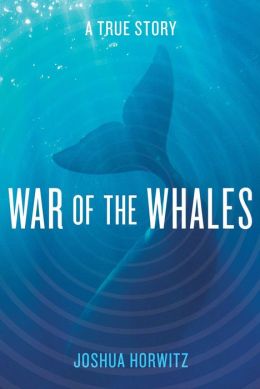 Whales have two staunch advocates: savvy lawyer Joel Reynolds with the Natural Resources Defense Council and Ken Balcomb, a Navy veteran and unassuming field researcher a world away from urban life. How much time did you spend with these two men? Tell us about them and what they have in common.
Whales have two staunch advocates: savvy lawyer Joel Reynolds with the Natural Resources Defense Council and Ken Balcomb, a Navy veteran and unassuming field researcher a world away from urban life. How much time did you spend with these two men? Tell us about them and what they have in common.
When you research and write this kind of book, you get very intimately involved in your protagonists' lives. One trait Reynolds and Balcomb share is their string of failed marriages--which is partly attributable to their zealous commitment to protecting whales. I've interviewed all their ex-wives and siblings, as well as girlfriends, colleagues and childhood friends. What's interesting is that the 360-degree perspective this gives you on a character often conflicts with their self-image.
These two men have totally different personalities, with almost no overlapping areas of expertise. Reynolds is cerebral and strategic, and a classic extrovert who can talk with scientists, policy wonks and celebrities with equal ease. Balcomb is a maverick who's quite personable one-on-one but who's incapable of working inside groups or organizations. At heart, he prefers whales to people. And he never seems to plan ahead what he's going to do. Which can be charming in small doses but tended to undermine his working and personal relationships over time.
But Reynolds and Balcomb share one crucial character trait, which is the quality that makes them both such effective change agents: tenacity. In their separate way, they each committed to hold the Navy accountable for the lethal effects of sonar and to compel them to change how they operate in whale habitats--even in the aftermath of 9/11, when fighting the military in court and in the court of public opinion was a steep uphill slog. They didn't care how long it took or what it cost them personally or professionally. And they never caved in to the cynicism or discouragement that overtakes so many social activists when confronting a large corporation or a powerful federal agency.
"As Balcomb knew from his two tours, the Navy was the most secretive of all the armed services, and never more so than when things went wrong," you write in War of the Whales. Was it difficult to gain access to information pertaining to the Navy, from studies and other documents to what took place in closed-door meetings?
Submarine warfare is known as "the Silent Service," and for good reasons. Submarines survive through their ability to operate silently in the ocean. Tracking enemy submarines requires equal stealth. It's an endless--and very high stakes--game of blind man's bluff.
Navy operations are almost all classified, and most of my first interviews with active-duty officers took place with a "public affairs" officer in the room or on the phone--which was a real conversation-killer and quite frustrating. When I listen to recordings of those interviews, I can almost hear my teeth gnashing.
But retired officers--and particularly retired admirals--have a lot more leeway in what they can discuss and disclose. These commanders were leaders who wanted their voices heard--and were usually willing to refer me to other retired "flag buddies." Eventually, everyone I wanted to speak with agreed to be interviewed. Some were hostile and tight-lipped, others were quite open and candid.
Working on War of the Whales turned into "a seven-year odyssey" that took you "around the world and, at times, around the bend." What kept compelling you forward to complete the book despite the challenges and the length of time it took?
Honestly, it was the power of the story that kept me going. "The untold story" is an overused trope of journalism and book publishing. But the more I learned, the more I realized how secret most of the story elements had remained for decades. Even the characters most deeply involved in the narrative had only a partial view of the story. The scientists knew the science, the admirals were focused on the enemy threat and the lawyers understood the law. No one had ever pieced the story together--and trust me, it's a doozy.
In particular, I discovered that the Navy almost single-handedly created the discipline of marine mammal science. The great irony of the story is that most of what we know about whales and dolphins today derives from Navy-funded research beginning in the 1950s. Ever since the Navy figured out that dolphins echolocate, it's been unstinting in its efforts to decode and reverse-engineer whale biosonar, as well as other aspects of their amazing acoustic mastery.
How many miles did you log while working on the book? Along with your visit to Laguna San Ignacio, a haven for gray whales in Mexico, what were some other memorable moments during your odyssey?
My first research trip took me to an international whale science conference in Cape Town, South Africa, which is also a great whale-watching locale. I first met Balcomb in Maui, Hawaii, when the Pacific humpbacks were in residence. Later I spent time with him at his research station on San Juan Island in the Pacific Northwest, where he's been tracking the Puget Sound orcas for three decades. When I was visiting the Bahamas, a whale stranded and I watched a local marine mammal response team conduct a forensic autopsy on the beach--so I know exactly what a dead whale smells like.
Just as fascinating were my visits to Navy labs and facilities in Washington, D.C., and San Diego, tours of modern destroyers and submarines and interviewing leading scientists at Woods Hole and Scripps research institutes and the Smithsonian. All the researchers I interviewed were brilliant and passionate investigators, whether they were Navy acousticians, field biologists or whale pathologists.
What would you say is the outlook for whales and other ocean dwellers? Where would you direct readers who would like to know more about protecting marine life?
In terms of Navy sonar, the outlook for whales is much improved, thanks to the efforts of Reynolds and Balcomb and their allies. After decades of operating in the shadows of classified operations and dark ops, the Navy is now much more transparent and accountable for how it conducts sonar and explosives exercises in its U.S. coastal training ranges. The Navy now spends a lot of time and energy complying with federal marine mammal protection laws, though whales are still stranding. Just this spring, during joint exercises involving U.S., Greek and Israeli warships near Crete, five beaked whales stranded and died.
The greater threat to marine life comes from other sources of noise pollution in the ocean--primarily commercial shipping and underwater oil and gas exploration. I hope my book raises awareness about this issue because all marine life, from fish to whales--even coral--is threatened by ocean noise, which is growing every decade.
Anyone looking for more information on this topic can go to the Natural Resources Defense Council's website, or to my book webpage at www.warofthewhales.com. --Shannon McKenna Schmidt
Joshua Horwitz: 'Whales vs. Navy'
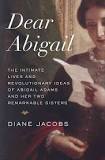 Jacobs was interested in Abigail's two sisters, Mary Cranch ("the good girl to Abigail's rebel, who grew up to be an immensely capable and shrewd administrator") and Elizabeth Shaw Peabody ("the most literary of the three sisters and the most competitive with Abigail"). After quite a bit of research, she amassed a "trove of witty, politically savvy, gossipy, incisive, heart-breaking letters" they wrote to each other, their husbands and children throughout the years. "Abigail's sisters were without doubt her intellectual equals. But because they didn't marry John Adams, their correspondence was harder to find."
Jacobs was interested in Abigail's two sisters, Mary Cranch ("the good girl to Abigail's rebel, who grew up to be an immensely capable and shrewd administrator") and Elizabeth Shaw Peabody ("the most literary of the three sisters and the most competitive with Abigail"). After quite a bit of research, she amassed a "trove of witty, politically savvy, gossipy, incisive, heart-breaking letters" they wrote to each other, their husbands and children throughout the years. "Abigail's sisters were without doubt her intellectual equals. But because they didn't marry John Adams, their correspondence was harder to find."




 On an otherwise picture-perfect morning in the Bahamas, a whale strands on the beach near marine biologist Ken Balcomb's research station--one of many that washed ashore that day, casualties of a clandestine U.S. Navy submarine detection system that floods ocean basins with high-intensity sound.
On an otherwise picture-perfect morning in the Bahamas, a whale strands on the beach near marine biologist Ken Balcomb's research station--one of many that washed ashore that day, casualties of a clandestine U.S. Navy submarine detection system that floods ocean basins with high-intensity sound.  Whales have two staunch advocates: savvy lawyer Joel Reynolds with the Natural Resources Defense Council and Ken Balcomb, a Navy veteran and unassuming field researcher a world away from urban life. How much time did you spend with these two men? Tell us about them and what they have in common.
Whales have two staunch advocates: savvy lawyer Joel Reynolds with the Natural Resources Defense Council and Ken Balcomb, a Navy veteran and unassuming field researcher a world away from urban life. How much time did you spend with these two men? Tell us about them and what they have in common.
